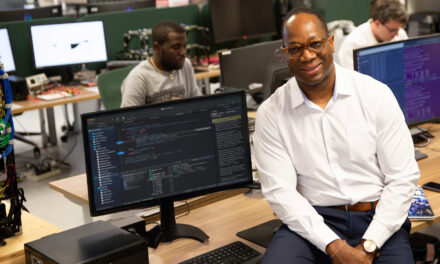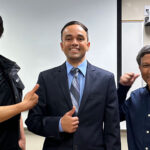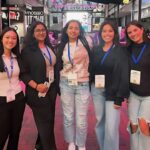
SENS MACH ‘16 previews next decade of ubiquitous sensing networks
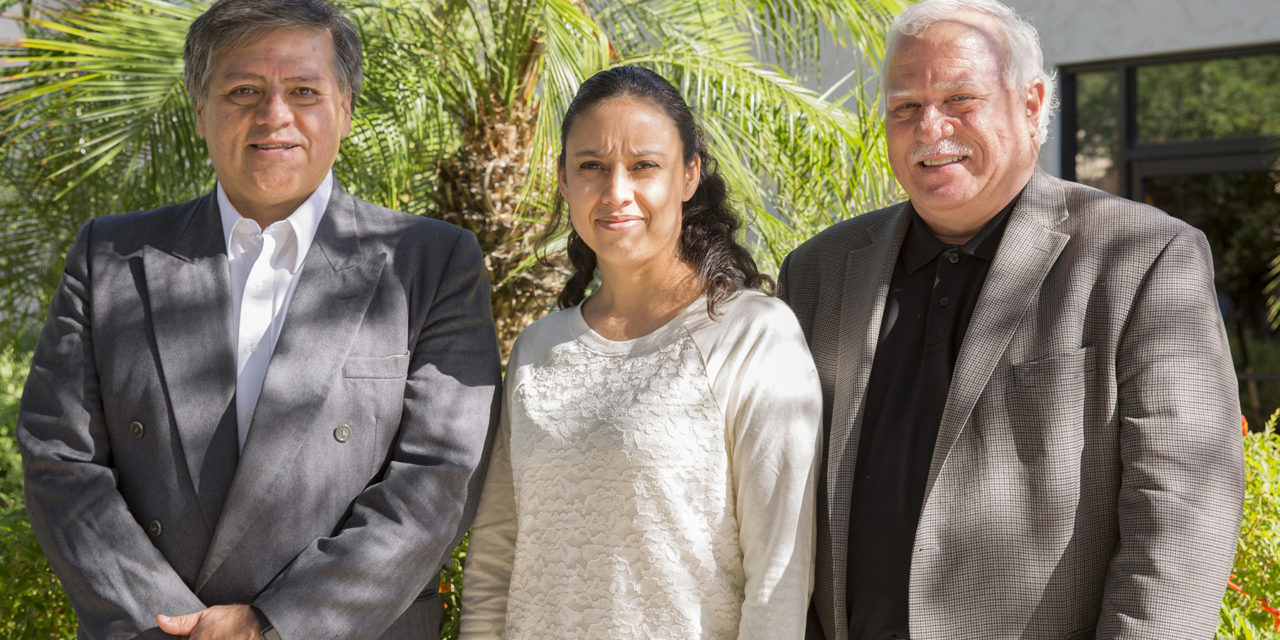
The most profound technologies are those that disappear.
They weave themselves into the fabric of everyday life until they are indistinguishable from it.
– Mark Weiser, 1991“The Computer for the Twenty-First Century,” Scientific American.
As the Internet of Things becomes the Internet of Everything and IoTivity bridges the chasm between smart phones, smart homes and smart cities into cloud, crowd and shroud computing, the minds behind the tech ponder where all the interconnections will lead.
The global arenas of food, medical care, clean energy, clean environment and disaster resilience will rely heavily on the interlinking of new of sensor and signal technologies over the next ten years.
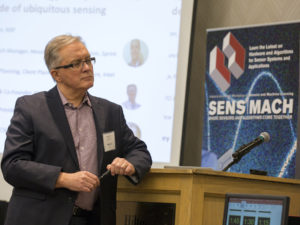
Stephen Whalley, Chief Strategy Officer for MSIG, led a panel discussion on growing demands for information and storage bandwidth during the SENS MACH conference last month. Photographer: Jessica Hochreiter/ASU
Likewise, funding for ventures that solve such universal challenges are on the rise, according to Stephen Whalley, chief strategy officer at the MEMS (microelectromechanical systems) and Sensors Industry Group (MSIG) who, during the Sensors and Machine Learning Industry-University Workshop in Phoenix in November, laid out programs like the Dangote and Bill & Melinda Gates Foundations’ commitment to end hunger in Nigeria by 2020.
A trade association, MSIG hosts Trillion Sensors (TSensors), an initiative focused on developing low-cost and new sensor types to address these critical areas – with global sensor development goals of seven trillion by 2017 and as many as 100 trillion by 2030.
The journey to TSensor began with the iPhone in 2007, according to Whalley. The original iPhone had three sensors—an accelerometer to rotate the screen based on the angle of the phone, a proximity sensor to turn on and off the display, and an ambient-light sensor to adjust brightness. “Today phones contain at least 28 sensors,” Whalley explained as an illustration of the growing importance of sensors in the smart universe.
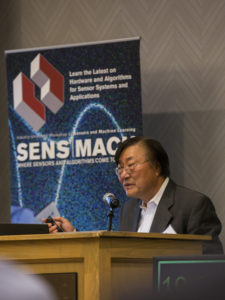
A full-scale paradigm shift expected as part of the 4th Industrial Revolution was the subject of CTO of InterDigital Byng K. Yi’s presentation. Photographer: Jessica Hochreiter/ASU
The CTO of InterDigital, Byng K. Yi, outlined the technical challenges in mobile sensor networks and IoT, drawing parallels between 5G wireless communications and the expected full scale paradigm shift of the Fourth Industrial Revolution – a fusion of physical, digital and biological technologies that impact all economies and industries. Yi also addressed the lack of availability of electromagnetic radio frequencies, known as spectrum, reserved for mobile phones, noting that the mobile industry and Federal Communications Commission have declared a spectrum shortage.
The ways in which ASU is harnessing data to improve services and positively influence student success was the focus of Gordon Wishon, ASU’s chief technology officer, in a presentation about the Smart Campus Initiative. In partnership with Dublin City University and Intel, the project is bringing smart technology to ASU’s Sun Devil Stadium and DCU’s Croke Park Stadium. Smart stadium features will include enhanced ticketing systems, game-day (and commencement) navigation tips on parking and shuttle schedules; in-seat engagement like group messaging, statistics analysis and ordering from stadium vendors; social media integration, and internal building maps for locating rest rooms and dining facilities.
“An instrumented smart campus uses the data and insight that becomes available through technology to improve the lives of its student body, community partners and workforce,” said Wishon. “The use of sensors, big data and analytics is creating a myriad of possibilities to improve the design and delivery of services.
Lauren Withycombe Keeler, a research professor in the ASU School for the Future of Innovation in Society, emphasized the need for sensor deployment standards and policies that address the social, ethical, legal and political dimensions of the future of IoT. “Now is the time to influence the trajectory of technological development – while it’s still possible,” she said. “Considering security and privacy after a technology has been created is like throwing baking powder on top of your cookies once you take them out of the oven.”
Ubiquitous Sensing Panel Discussion
Sensor data security, growing demands for information storage and bandwidth, and the transition from reactive to proactive medicine were among the topics of a panel discussion about challenges faced during the next decade of ubiquitous sensing.
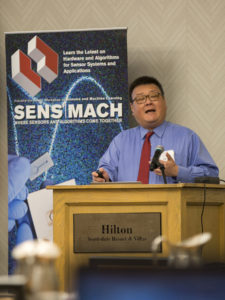
Ian Chen, senior manager at NXP, says collaboration is easing the challenges of collecting and sharing data. Photographer: Jessica Hochreiter/ASU
“Anything that will have an impact on the IoT in the next five years must already exist,” said Ian Chen, senior manager at NXP, remarking that it can take up to 10 years to roll out new technologies. He noted that obstacles in collecting and sharing data are a diminishing issue because of collaborations. Intel Strategic Planner Claire Jackoski concurred, referencing IoTivity—the industry-wide collaboration through which standards are being developed to connect billions of wired and wireless devices to each other and to the Internet.
Panel participants also viewed the cost-to-value of new technologies as an important consideration. “How do you balance the value of a wearable sensor that monitors a heart arrhythmia or path to end world hunger with a connective doorknob that tells you when the kids are home?” asked Joseph Gilman, regional Manager for Sprint.
Gilman, who has coordinated Smart City development in Kansas City and Las Vegas, addressed how municipalities are using mobile broadband services in areas like public safety (connected officers, police cars, video surveillance), lighting and energy (street lights, water management), parking (permits and EV charging stations), Transportation (smart busses, fleet and traffic management), smart buildings (plumbing, HVAC, refrigeration, doors) and city services (water and waste management, energy conservation, city info kiosks and digital signage).
Sensors and Machine Learning
A short course on sensor-related machine learning, co-organized by Mike Stanley, systems manager at NXP, and Andreas Spanias, professor of electrical engineering and director of the Sensor, Signal and Information Processing Center – a National Science Foundation Industry/University Cooperative Research Center at ASU, covered a series of signal processing algorithms for sensor information extraction. Stanley presented an array of tools for embedded sensors and machine learning, and SenSIP doctoral students Uday Shankar and Henry Baum addressed machine learning results from their current projects.
Expanded Collaboration
After the workshop, SenSIP students presented I/UCRC posters at the MEMS & Sensors Executive Congress (MSEC) reception at the Camelback Inn. Student posters presented included mobile health monitoring, acoustic echolocation techniques, sensor localization algorithms, mobile apps, sustainability sensor applications, and machine learning methods for fault detection in sensory systems. ASU and ITESM faculty also attended the MSEC reception and networked with more than 200 company managers and executives.
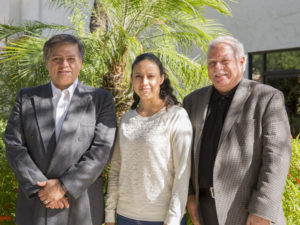
Andreas Spanias (right), professor of electrical engineering and director of the SenSIP Center, welcomes SENS MACH speakers Jose Vargas, Director of the Center for Electronics and Telecommunications (left) and Rafaela Villalpando Hernandez, both from ITESM. Photographer: Jessica Hochreiter/ASU
“The workshop provides an opportunity for academia, industry and government to address our shared interests and concerns about the explosion of digital signal processing and sensor applications as we move toward the Fourth Industrial Revolution – characterized by technologies that blend the physical, digital and wireless mobility,” said Spanias.
SENS MACH 2016 was organized by SenSIP, NXP and the Tecnológico de Monterrey (ITESM), which will host the next ASU/ITESM workshop in Monterrey in Spring, 2017.
With the support of SenSIP, ITESM’s Center for Electronics and Telecommunications recently received a start-up grant from the Consejo Nacional de Ciencia y Tecnologia (Conacyt). Citing the ASU/ITESM partnership, Elizabeth (Betsy) Cantwell, vice president of ASU Knowledge, Enterprise Development, said “Real, meaningful disruptive innovation will come from collaboration.”

















